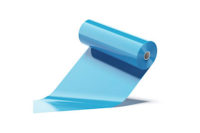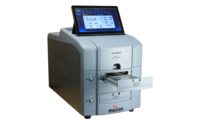Packaging Tech
Barrier materials: Few barriers to growth

The market for barrier materials is projected to grow both nationally and globally.
As use of flexible packaging expands, so does the demand for barrier materials. In fact, the market for barrier materials is projected to grow 2.7 percent per year to reach $13 billion in 2020, according to Barrier Materials for Flexible Packaging 2016-2020, a market study published in January by Allied Development Corp., Burnsville, Minn.
Another study, The Future of Functional Additives and Barrier Coatings for Plastic Packaging to 2021, published in August by Smithers Pira, Leatherhead, U.K., also forecasts a healthy growth rate globally. It attributes the expansion to economic, social, demographic and lifestyle changes; brand owners’ increasing focus on source reduction and sustainable packaging; consumer demand for convenience food; and a growing requirement from large retail chains for packaging that offers extended shelf life and less food waste.
Barrier properties are needed to maximize product shelf life and generally are imparted by a passive barrier layer consisting of ethylene vinyl alcohol, foil, polyvinylidene chloride or a coating such as metallization or transparent aluminum oxide or silicon oxide. The barrier layer often is sandwiched between layers of common packaging polymers such as polyethylene (PE), polyethylene terephthalate (PET) or polypropylene, but also can be part of a more complex structure with five, nine, 11 or more layers.
For more stringent barrier needs, an active barrier can be delivered by a built-in oxygen absorber, or scavenger. Potential applications for barrier technology include vacuum packaging, trays and lidstock and pouches. Packages designed to serve as the cooking vessel for the product may require additional features such as dual ovenability and/or self-venting. Self-venting not only maximizes consumer convenience, but also enhances food safety because there’s no need to pierce the package before the product goes into the oven.
Interest in retorted and high-pressure-pasteurized products in pouches is driving demand for packaging materials that combine high barrier properties with robust, leak-free seal integrity without creating a package that’s impossible to open. Clarity for product visibility is important too, as are convenience features.
Consumer convenience also continues to spur interest in features such as straight tear propagation at a tear notch to ensure mess-free opening and peelable and peel/reseal films. To deliver peelability, sealability and barrier properties, structures may rely on seal layers based on metallocene grades of PE. Advantages include greater contact clarity and lower seal initiation temperature. Because sealing requires less heat, there are environmental and cost benefits because less energy is needed.
Sustainability and economics remain important considerations when specifying barrier structures and other flexible packaging materials. Printability is on many brand owner wish lists because printed film enhances brand identity, and potentially reduces or eliminates the need for label application and secondary packaging, reducing material consumption and costs.
Another path to an improved environmental profile is the use of structures with recycled or bioplastic content. One food-grade material combines toughness and barrier with an outer layer of recycled PET, a barrier layer of EVOH and an inner layer of PE. Applications include modified-atmosphere and form-fill-seal packaging.
Bioplastics also may enhance sustainability. A bioplastic layer in a PE or PET barrier lamination reduces reliance on petroleum-based plastics and may lower overall greenhouse gas emissions associated with the packaging. NP
Looking for a reprint of this article?
From high-res PDFs to custom plaques, order your copy today!





